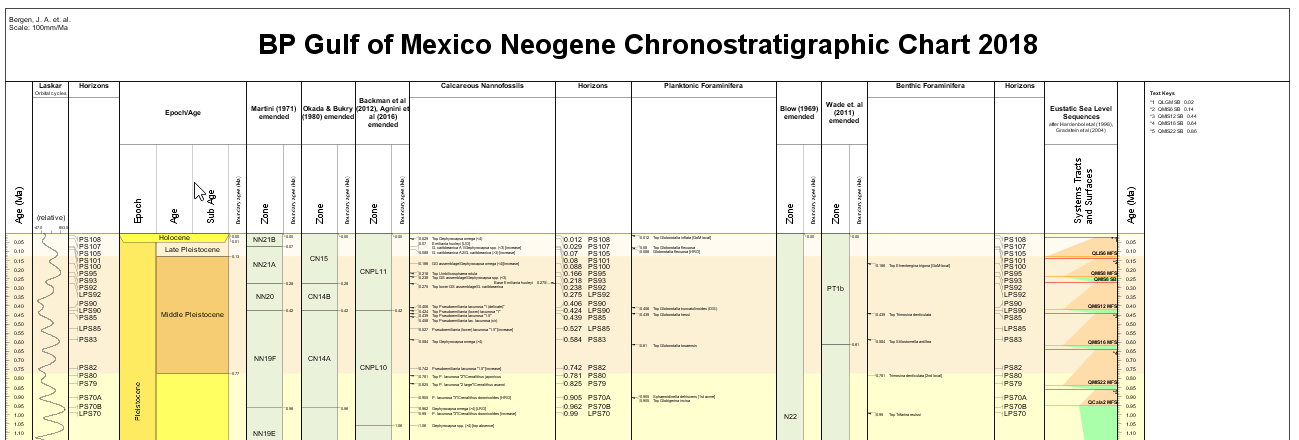Month: February 2021
GNATTS off to BP
Note: if you’re receiving this for the first time, you’ve just been added to our blog list. You can unsubscribe if you’d rather not receive these, but we hope you’ll find the occasional post interesting.
Waiting for a timescale is like waiting for a bus in the rain. You wait for ages, then two come along at once. We are pleased to be able to share with you a data pack of schemes based on the BP Gulf of Mexico Neogene Astronomically Tuned Time Scale (GNATTS) published in 2019. The full background and reasoning for the scale are available under open access here:
Bergen, J. A., Truax III, S., de Kaenel, E., Blair, S. A., Browning, E., Lundquist, J., Boesiger, T. M., Bolivar, M. & Clark, K. (2019). BP Gulf of Mexico Neogene Astronomically-Tuned Time Scale (BP GNATTS). GSA Bulletin, 131 (11-12): 1871-1888.
GSA Bulletin; November/December 2019; v. 131; no. 11/12; p. 1871–1888; https://doi.org/10.1130/B35062.1; 7 figures; 7 tables; Data Repository item 2018407; published online 16 April 2019.
Data are available at http:// www .geosociety .org /datarepository /2018 or by request to editing@ geosociety .org.
We have taken all the zonation schemes and events, and turned them into an updated set of biozone schemes and composite standards, which are linked to corresponding named taxa. You can download the entire set of schemes which make up this chart and import them and reconstruct this chart if you wish. Alternatively you can just import selected schemes.

If you download the entire data pack you can import/match the linked taxa against your own data. A word of warning: the vertical scaling is based on GTS2012/2016 ages except that the Gelasian is included in Pliocene, making the Pliocene/Pleistocene boundary younger when compared to those published schemes (and indeed the standards ICS chart).
You’ll need StrataBugs 2.1 to read this file, preferably v2.1.1. use Help | About to find out which version you’re running, and contact us if you need help upgrading.
The Nannofossil events are differentiated on the basis of size, and this has been carried through to the taxonomy, to create separate species for the different size fractions. The µ symbol (for micron) is implicit in these taxon names: this is to follow the convention of the published chart, but also there is a quirk that a name search in StrataBugs will not pick up taxon names which include the µ symbol, because of the inconsistent way the uppercase character is handled in SQL.
Thanks to Todd Boesiger for supplying the initial data, and to Eric de Kaenel for all his checking and comments, much appreciated.